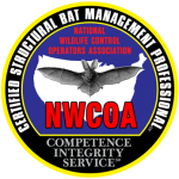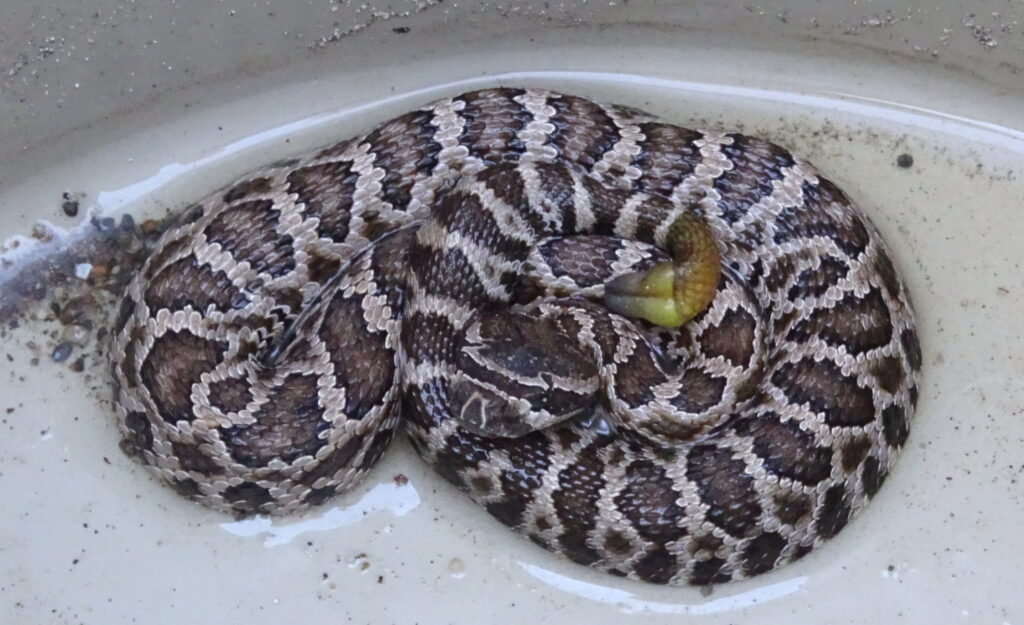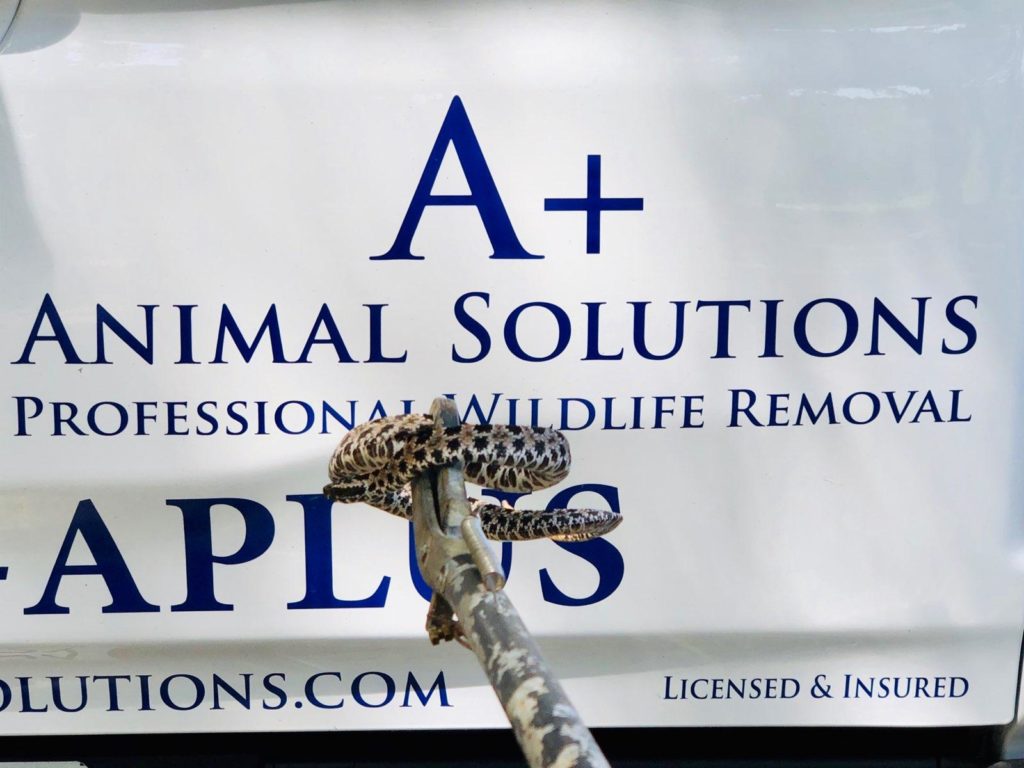GET RID OF BAD SNAKES ONCE AND FOR ALL
Fast & Effective Snake Control Services in Florida
Our first instinct when we see a snake is to react in fear. This is because these scaly, legless creatures are largely misunderstood due to the countless myths surrounding them. Of the 125 species of snakes in the United States, only about 20 are venomous! This explains why the most commonly encountered snakes are harmless. Some of these include garter snakes, rat snakes, and water snakes. Therefore, our fear of snakes is exaggerated. Furthermore, snakes are extremely beneficial to the ecosystem. In suburban areas, they help to keep the rodent population in check.
Snakes generally avoid contact with humans and will only strike when they feel threatened. However, they sometimes wander into yards, swimming pools, homes, and attics. When this happens, most homeowners want to get them out promptly which is a good reason to contact us.








Methods of Snake Removal
The first step in a snake removal process is to identify the species. This will help determine if it’s venomous or not. The snake can then be removed by either hand or traps.
The process of snake identification, capture, and relocation can be daunting for most people, especially if it’s venomous. This is why you should use a professional snake removal service. It is never worth the risk meddling with a snake you haven’t accurately identified. Visit snake-removal.com to learn more about snakes’ habitats and snake removal techniques.
Most times when we see a snake on our property, they are likely in transit. However, they sometimes reside on a property if the conditions are conducive. Therefore, the most important step in snake prevention is in making your yard inhospitable to them. This can be achieved by:
1) Removal by Hand
Non-venomous snakes can be removed with gloves and then placed into a snake bag. On the other hand, venomous snakes require special handling. A pair of snake tongs or hook should be used to pick up a poisonous snake before putting it in a snake bag. If bitten by a snake, it is necessary to quickly seek medical attention.
2) Snake Traps
In situations where you know that a snake is hiding in your property, setting a snake trap is the best option. The traps are strategically placed to improve the chances of capture. Once captured, the snake can be safely relocated.
3) Snake repellents
It is important to note that most snake repellent products don’t work and should be avoided. Snakes are not deterred by mothballs, sulfur bombs, peppermint oil, citrus sprays, or even rope barriers.
4) Eliminating Food Supply
Snakes are usually attracted to places where rodents are abundant. Also, they feed on moles, insects, and fish. If you’re dealing with any of these animals, make sure to solve your pest infestation issue first. Once there is no food supply, there’s no incentive for snakes to reside on your property.
5) Eliminating Hiding Places
Snakes love to reside in dark, damp places. That’s why they’re usually found in holes, cracks, and crevices. Therefore, a full inspection should be carried out to ensure that no hiding spaces are available. Repair damaged gutters, ventilation ducts, and piping. Snakes are also known to hide under compost heaps and debris. Therefore, get rid of any pile of leaves and wood chips from your yard. Furthermore, you should keep your lawn trimmed at all times. Ensure that you cut down heavy bushes and trim back hedges. All these will discourage them from residing on your property.
6) Fencing
Fencing is usually a last-resort strategy. Fences prevent snakes from gaining access to your property. For it to be effective, it should completely circumscribe the perimeter of your yard. It also has to be unclimbable. A solid fence is quite expensive and should only be considered in extreme circumstances, like continual encroachment of snakes.


How to Keep Snakes Out of Your House
Snakes are a common concern for most homeowners across the United States. Now, most people fear, of course, venomous snakes to the point of making this a phobia. And while the threat is very real, it’s worth keeping in mind that the snake in your garden could just as easily be non-venomous.
Still, you don’t want them on your property, so we at A+ Animal Solutions have compiled a list of methods you could employ to keep serpents out of your house.
Beware rodents
It’s a well-known wildlife exclusion rule that these creatures come to where there’s food. In other words, you have to figure out what on your property might translate to a tasty treat for a snake.
Usually, this means rodents, as most species of snake have been known to feast on small to medium-sized mice, rats, and so on. It’s also a possibility that you’ve got birds nesting on your property, and the snake may be attracted to the eggs, if not the bird itself.
In any case, you’ll want to follow common rodent and bird prevention solutions, such as cutting out food supplies, fixing cracks and holes, and maintaining a tidy home.
Trim your backyard
Another thing that we, at A+ Animal Solutions, always try to remember is that snakes are less likely to visit a property with a neatly trimmed backyard. Why is that? Well, for a rather obvious reason.
See, snakes, like any other predator, will look for a nice, cozy place where they can nest. This usually means overgrown hedges, bushy areas, piles of firewood, and tall grass. Commonly, snakes need such places because a, it gives them a great spot to hide in and wait for their prey, and b, because it also allows them to conceal themselves. That way, they’re harder to detect, and thus less likely to come into conflict with the property owners.
So really, you’d be surprised what a difference trimming your lawn and hedges can make.
You could try natural repellents
Natural repellents tend to attract some bad rep, usually because some of these are more effective than others, while indeed others hardly work at all. And while there is a lot of debate in the wildlife removal world as to the efficiency of natural repellents, we say they’re at least worth a try.
So here’s how it works. Snakes are well known for their keen sense of smell, which is why it’s logical to assume they’re also deeply affected by strong odors. This is why some homeowners swear by planting cloves, onion, garlic, and other strong-smelling plants in their garden.
In our experience with A+ Animal Solutions, we’ve noticed that at the very least, you’ll have some readily available onions and garlic at your disposal, so we say go for it!
Get a pet
Okay, this one is a little bit risky. Here’s the thing – a lot of snakes are less aggressive than we give them credit for. This is why they tend to avoid properties that are frequented by predators. This is also why some homeowners find it effective to get a cat (cats tend to be more predators than dogs in this field), so as to ward off snakes.
Alternatively, you could make your home attractive to raccoons, as they’ve been known to scare off snakes, as well.
One final alternative for getting a snake predator is putting up a beam, for owls or vultures to perch on. Both owls and vultures are well-known predators that snakes tend to avoid at all costs, so if they detect the presence of one of them on your property, you’ll likely be snake-free!
How to Get Snakes Out of The Attic?
Snakes in the attic are a serious concern, and one of the major reasons why a snake will crawl into the attic is because of food. The type of snakes usually found in the attic are rat snakes, and they get into the attic because they were trailing a mouse or rat. Snakes are known to follow their prey using their awesome sense of smell. If you have a rat infestation in the attic, the rats in there may attract a snake.
And unlike most other animals, snakes are very quiet creatures, they can live right in the same space with you, and you would have absolutely no idea until you stumble on them or their shed skin. They can hide behind boxes and stay in tight corners, where you will be unable to detect them. Rats snakes are not poisonous, but that doesn’t mean that you should let them live in your attic. A snake in your attic has to go, and here are some of the ways you can’t get rid of it.
How to get rid of snakes in the attic
The first step to removing a snake is to figure out exactly where it is or the general area where it has been living. Finding a snake can be a challenge, they don’t leave obvious clues of their presence. You have to be very attentive to hear a snake hiss, and that doesn’t happen very often, you simply can’t rely on it.
If you’re absolutely sure of the presence of a snake in your attic, the best approach is to get a professional from A+ Animal Solutions to handle the situation, except if you are very familiar with handling snakes. We do not recommend DIY snake removal because these animals can be venomous and a bite from a venomous snake can have deadly consequences.
When removing a snake, it’s important to wear protective clothing in case you are dealing with a venomous snake. Wear goggles to protect your eyes from spitting snakes, coveralls and boots to protect your skin, gloves to protect your hands, and a long snake pool to pin down the snake. Again, you don’t have to remove a snake yourself, there are professionals who have been trained for the job and are willing to handle the task for you.
Snake traps
The best way to catch a snake without having to get too close to it or physically hold it with your hands is by using a snake trap. There are different types of snake traps available in the market. One of the most common is the snake glue traps, which are similar to a glue trap for mice but designed for snakes.
You can use a snake glue trap to catch a snake in your attic, the trap uses scent to lure the snake into the box where it is then glued to the box. This works well if you have already identified where the snake is. You may not make a catch if you place the trap in the wrong area. You can move the trap as often as you need to because it’s very mobile and easy to place in different locations, you can also get more than one of them and strategically place them around the attic.
The second type of snake trap is the maze trap. A snake maze trap is a box with a maze that the snake crawls into and when it gets to the end of the maze, it will be unable to turn around. Unlike the glue board, a maze trap doesn’t have adhesive, it works by encouraging the snake to continue moving forward, but it’s a dead-end and the snake will be stuck inside until you find it.


How to Repel Snakes in Natural Ways
It can be tricky to efficiently get rid of snakes on your property, particularly if you’ve set out to do it without the aid of a professional wildlife removal company. And while there are numerous benefits to doing that, and we do recommend hiring professional help, particularly if you’re dealing with a persistent snake problem, there are still natural ways to repel snakes.
We’re looking at natural ways to keep snakes away without actually hurting them, as that would be inhumane and also often unhelpful.
- Chickens and snakes don’t mix.
Well now, that really depends on the size of the snake, and its aggression levels. If it’s a big dangerous one, then a confrontation with a chicken may result in bloodshed, but most common snakes usually can be kept away with chickens. This is because snakes will try to enter the chicken coop and attach the bird’s eggs, which obviously, chickens don’t care for. So they will usually attack the snake, as will turkeys, or pigs.
That being said, it doesn’t get more natural than keeping a few farm animals around, just to scare snakes off!
- Birds of prey.
And since we started by talking about birds that can scare snakes away, let’s not overlook another common, more or less effective snake repellent – the wild bird perch. Basically, the idea behind this is you install a perch high up on your property to attract a predatory bird like an owl or a hawk.
Sensing this predatory, dangerous bird will often be enough to determine snakes (and other undesirable wildlife, by the way) to keep their distance.
Let your garden do the work.
Another common option for natural wildlife prevention involves putting down plants that the wild animals will find offensive. One such example is lemongrass which, for its potent scent, is a well-known snake deterrent.
Some homeowners experience great success in keeping snakes at bay by surrounding their yard with lemongrass. However, we do recommend keeping an eye on your crops, since lemongrass can grow bushy and fast. Similarly, wormwood has been known to yield similar results in snake prevention.
- Keep your yard neat.
This is another great step you can take to deter snakes, as well as other wild animals, from entering your yard. You see, snakes tend to avoid lawns that are neat and trimmed, as they offer good visibility, and thus expose them to danger. They also dislike yards that are neat, without piles, leaves, logs, and other debris, as that usually serves as a nesting spot. And without a place to nest, snakes are less likely to stick around.
- Make it sharp.
Another excellent idea includes adding a layer of sharp mulch-like things, like eggshells, gravel, or corals, to line the sides of your yard. This will make it unpleasant for the snake to crawl over, and so it’ll make them think twice before attacking your yard. However, this might not be such a good idea if you’ve got dogs or cats running about.
Bonus: Naphthalene
Naphthalene is a big favorite for snake remedies, though not natural, thanks to its deeply pungent smell. The strong scent of naphthalene hurts the snake’s delicate olfactory sense and discourages him from hanging around. It is present in many commercial snake repellents, though you can also use it in its regular form to get much the same results.
Naphthalene is also present in mothballs which, although not natural, are still a pretty effective way to get snakes to quit your property for good. There are, however, downsides to using naphthalene in this sense, as the smell can linger for weeks and even months afterward.


How to Get Rid of Snakes in Your Basement
Snakes are one of the most common animals you’ll find crawling around your home, and that’s for good reason. With so much slithering around the world and the comforts your basement can provide for a cold-blooded creature, snakes are more than likely to meander throughout not only your home, but your basement.
Although many believe snakes to be animals out to get humans, most try to avoid us out of fear. Basements are a great place to hide away, not only from us, but also from other predators. Nonetheless, they’re also cool spots for snakes to relax, insulated from the outside world, while also providing the opportunity to find rodents, bugs, and more.
So, how can you get rid of snakes in your basement?
Find the Snakes and Their Entrances
First things first, find out what you’re dealing with – of course it’s very easy to determine if there’s a snake in your basement, but that’s not the important part. Rather, it’s what kind of snake. After all, there are thousands of species, some venomous and others generally harmless to humans. When dealing with snake problems, you need to make sure you have the upper hand.
If you go blindly to attack or remove a snake and it turns out to be venomous, then you’ll likely be bitten in response. And that’s on top of just aggravating the snake. Rather, it’s important to scout out and learn key things about the snake, like its coloring, size, shape, and more. Once you’ve gathered enough details, either do some quick research on the snake species or contact local animal control.
Afterward, if you’re taking care of the snake(s) yourself, then find the entrances they might have come through. Although snakes can slither through many small entrances, the likely answer isn’t in a window or door, but rather cracks, ducts, open spaces, or little openings. Safely look around your basement for signs of light, holes from the outside, or other manners that the snake might have come through.
Once you’ve learned more about the snake and the way it enters your basement, then you can start to take action. If the snake’s venomous, then leave it alone. Call a professional or your local wildlife control – these animals can potentially kill you and without the proper protection can cause way more damage to you than you can to them.
Removing a Snake
Otherwise, if the animal’s harmless or at least nonvenomous, then decide if you’re going to take care of the animal. In any situation, make sure you’re covered with clothing and protective materials, and work to cover every entrance or exit from your basement but one that the snake can fit through.
Once everything’s blocked off in a way that allows the snake an exit, but no other ways to move about the inside and outside of your basement, then try to get it to go through that exit. If your basement has an opening to the outside, then this method will force the snake to go through that hole, allowing you to caulk or seal it however you please, ensuring it doesn’t return.
For basements without an easy exit above ground, then you might have to contact a professional, as simple methods like using a garden hoe or bag aren’t the most safe options. Not only are they likely to put you in danger, but they’re inaccurate and rely on you dragging a snake out of a basement and through your house to get rid of it.
Either way, make sure that everything is sealed up and controlled once the snake or snakes are out. The key idea in doing this is to ensure that no other animals, snake included, access the basement in a way that puts you at risk.
CALL NOW
GET FAST QUOTE









